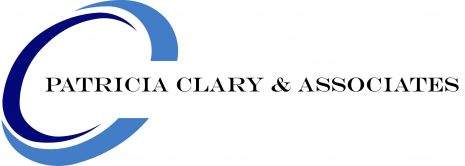In an earlier article, effective convening leaders were seen as those who a) possess self-awareness and comprehend how their fundamental beliefs, values, and attitudes can impact the outcome of collaborations; b) value the development of collaborative efforts while accounting for stakeholder diversity and inclusion across socio-economic status, customs, languages, influential capacity, and resource disparities; c) strive for excellence by understanding and meeting the expectations of stakeholders; d) assume the role of organizer and administrator of the collaborative effort while being adaptable to the various roles and responsibilities required; and e.) recognize and adeptly address tensions that may arise among collaboration stakeholders to maintain stakeholder congruity.
In stakeholder collaborations, congruity refers to the alignment or consistency between the stakeholders’ goals, values, and interests. When there is congruity between stakeholders, they share common objectives and work together towards a common goal. Congruity can help foster trust, build consensus, and promote effective decision-making within the collaboration. Conversely, stakeholder incongruity can lead to disagreements, conflict, and difficulty reaching an agreement on important issues. Therefore, establishing congruity between stakeholders is a key factor in achieving successful stakeholder collaborations, as it helps to create a sense of shared purpose and mutual benefit. This article covers conflict resolution and four tactics a convening leader can use to maintain stakeholder congruity when tension arises.
Tactic number one is to create a safe and inclusive space for stakeholders to express their concerns and ideas. A convening leader can rely on active listening to all stakeholders to understand their perspectives, needs, and interests. Moreover, if tensions arise between stakeholders, the convenor can act as a mediator and help them work toward a mutually beneficial solution. A mutually beneficial solution can involve identifying common ground, facilitating compromise, and finding creative solutions to complex issues previously not considered. Furthermore, in a safe and inclusive environment, the convenor should focus on finding solutions rather than dwelling on the problems. They should encourage stakeholders to brainstorm ideas, identify potential solutions, and work together to implement them. Finally, the convenor should follow up with stakeholders to ensure the implementation of agreed-upon solutions. Implementation can involve monitoring progress, providing support and guidance, and addressing issues or concerns.
Tactic number two is to manage power dynamics. To manage power dynamics, a convening leader should identify power imbalances and be aware of how these imbalances may influence the collaboration process. A convening leader should be mindful of proven practices to address the imbalances. By embracing equity and inclusion, the convening leader also creates a collaborative environment that allows all stakeholders to participate and contribute. Moreover, the convenor should build trust between stakeholders by demonstrating fairness, transparency, and accountability.
Tactic number three is to navigate external pressures. The convenor should be aware of external pressures that may impact the collaboration process, such as regulatory changes, stakeholder demands, or funding requirements. Convenors should proactively identify potential external pressures and their impact on collaboration. Additionally, a convenor should manage stakeholder expectations around the collaboration process, particularly in light of external pressures. They should be realistic about what can be achieved and communicate any potential limitations or challenges. The convenor should work with external partners, such as funders or regulatory bodies, to manage external pressures and ensure the collaboration process is not negatively impacted. Finally, the convenor should be flexible and adaptable in response to external pressures and be willing to adjust the collaboration process as needed.
Tactic number four is to use effective communication. The convenor should communicate clearly and concisely with stakeholders. They should use plain language and avoid technical jargon or complex terminology that may create confusion or misunderstandings. Additionally, convening leaders should use different communication methods to reach stakeholders, such as in-person meetings, video conferences, or email updates. Effective communication will address the conflict directly, expressing the concerns, possible solutions, and progress reports to maintain stakeholder engagement and build trust.
Let’s recap. By creating a safe and inclusive space for stakeholders to express their concerns and ideas, a convenor can address tensions in collaboration and foster a more collaborative and productive environment for stakeholders to work together towards shared goals. By managing power dynamics effectively, a convenor can reduce tensions in collaboration and foster a more inclusive and equitable collaborative environment. By navigating external pressures effectively, a convenor can minimize tensions in the collaboration, maintain stakeholder trust, and ensure that the collaboration process remains on track. Finally, by using effective communication strategies, a convenor can reduce tensions in collaboration, build trust among stakeholders, and ensure that the collaboration process remains on track toward achieving shared goals because community matters.
In Community,
Dr. Pat
Patricia A. Clary is a consultant who champions the advancement of strategic community impact agendas to address intricate societal challenges through collaborative efforts, convening leadership, and effective governance.
You can contact her through the following channels:
– LinkedIn: https://www.linkedin.com/in/pat-clary/
– Facebook: PatriciaAClaryPhD
© 2023 All rights reserved.
Share This Story, Choose Your Platform!

Patricia A. Clary, Ph.D.
Columnist Community Matters / Collaboration / Convening Leadership / Governance / Systems-Thinking


